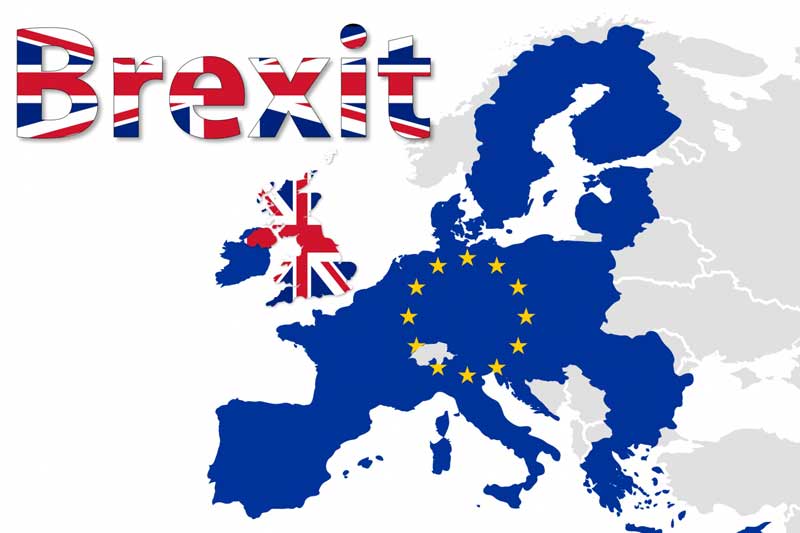
Actions of people, and especially of Government, always have effects that are unanticipated or unexpected or unintended. This ‘Law of Unintended Consequences’[i] applies across many domains of human endeavor including the recent British exit vote from the European Union.
What is the role of technology, big data analytics and social media in the result of the Brexit vote in the United Kingdom? Could predictive analytics have helped in shaping the understanding of citizen reactions to the outcome of the result?
There are some striking statistics that are now emerging from this referendum. 75% of the 18 to 24 year olds voted to remain; 56% of the 25 to 49 year olds voted to remain. While for the 50 to 64 year olds 56% voted to leave and 61% of the 65 and over citizens voted to leave.
Is the disparity between the under and over 50’s about citizen engagement and technology access? Are the over 50’s in the UK feeling disempowered and disconnected?
In trying to understand what is driving the issues within the EU economically, it can be useful to go back to basics and think about the economic structures and the viability of the EU going forward.
When economies trade with each other, inevitably the economies have different capabilities and strengths. The weaker trade partner inevitably wants more of the stronger trade partner’s products and often more than it can afford. The stronger economy has to find some way of balancing this trade difference or the weaker trading partner will not be able to consume the products of the stronger partner.
Striking that balance can mean that the weaker partner loses their individual identity as the stronger trading partner dominates the terms of their trade or ends up ‘owning’ all the dimensions of the weaker partner’s means of production.
This fundamental tension is the basis of an underlying reality which impacts all aggregations of people who want to take part in trading relationships. It is as fundamental as the assumption that no two people are alike and that each have unique and different capabilities. Some capabilities are more valued than others at different times and in different places.
How does this apply to Europe? The aggregations of people are described in terms of the member countries of the EU. There are weaker and stronger economies and striking a balance of trade has always been challenging and historically has resulted in extensive conflict as each of the aggregations of people has wanted to retain their sense of identity even though they might be the weaker of the trading partners.
Regulating the balance of trade through the control of the value of an economies currency in relation to a trading partner has been a basic mechanism to temper the desire to buy what you cannot afford. Individuals within an economy can only buy when they have enough money. If a product is too expensive then they cannot buy it. In order to get money, they need to sell what they produce. The overall value of money within the economy is determined by how productive that economy is. The productivity of the economy underpins the value of the currency.
The management of the value of a currency relative to a trading partner is a tool to control the extent to which a weaker trading partner over commits to a stronger trading partner.
What happens when the value of a currency is fixed across different economies? How is the ‘balance’ maintained if that particular lever is removed? What other mechanisms can be used to make sure that the weaker trading partner is not overwhelmed by the stronger trading partner? Other mechanisms do exist of course including the establishment of banks and interest rates.
The interesting point is that there has to be another mechanism if the ability to use differences in the value of currency is removed. In the EU, the establishment of a common currency, the Euro, has effectively fixed exchange rates across the different European economies. What mechanisms are in place to ensure that the balances in trade between the different EU internal trading partners are maintained? If there are no mechanisms for channeling back the imbalances, then the weaker economies just become overwhelmed and indebted to their internal stronger trading partners. The rich will get richer and the poor will get poorer or the rich will just take over the resources of the poor.
The fundamental dilemma facing the EU appears to be the lack of a mechanism to adjust the balance between the strong and the weak economies. The British exit from the EU has an economic dimension to it but in not adopting the Euro as their currency, the British are able to step away from ever tighter integration and absorption by stronger trading partners. Without their own currency, other economies, such as the Greek economy, has another dimension of challenge to surmount.
If the Greek economy had retained the Drachma, its value could have helped to maintain the trade balance by ensuring that living standards were a true reflection of the productivity of that economy. A floating value of the Drachma would have ensured that Greek goods would be affordable to a stronger trading partner while the trading partner’s goods would appear to be more expensive and therefore less attractive to the Greek purchaser. A natural balance determined by the floating value of the currency would emerge rather than the current situation where an expensive Euro pre-determines the ever increasing economic debt of the weaker economy.
The apparent inability of the European Community to implement new mechanisms to balance out the inequities between the different EU economies is a fundamental threat to its existence.
The British withdrawal from the EU decision, will have many unintended consequences.
Perhaps a willingness to read the writing on the wall and begin to address the fundamental threat to the coherence of the EU is one of them? Perhaps understanding and engaging with the citizen’s issues early and proactively will allow that threat to be understood and managed.
The disparity between the under and over 50’s in the British Exit referendum is a signal of the need to develop more effective citizen engagement strategies which spans the full spectrum of citizens. One of the unintended consequences of this referendum is the apparent fault line in values between the younger and the older citizens in Britain – a fault line that may have emerged because of the digital divide.
[i]attributed to the American sociologist Robert K. Merton in his 1936 paper.





















